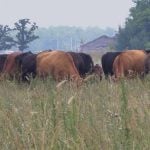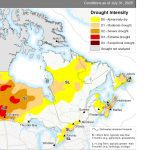Saskatchewan’s apiculturist says there is room for more honey producers because of declining production in the United States.
“With the increasing awareness of the health benefits of honey and its byproducts, along with the declining honey production and increasing population in the United States, we are hopeful that honey production will remain profitable,” said John Gruszka, of Saskatchewan Agriculture in Prince Albert.
The cost of producing honey has risen in the last 10 years because of higher fuel, feed and labour costs, according to the department’s surveys of honey producers.
Read Also

Alberta eases water access for riparian restoration
Alberta government removes requirement for temporary diversion licence to water plants up to 100 cubic metres per day for smaller riparian restoration projects
The biggest increase was in labour. It has doubled since 1992, rising from $17 per hive to $35 per hive.
“It takes many people to get the honey crop out of the field and extracted. It’s a race to get the honey off during honey flow, usually between about mid-July and mid-August,” said Gruszka.
“Timing is important. You need to keep the boxes empty to accommodate the daily addition of honey, and those boxes weigh 90 pounds. So, for about two months of the year, the average commercial honey producer has 10 to 12 people on staff.”
Add up all the costs, including equipment and building maintenance, and the operating cost for one beehive has increased from $66 in 1992 to $109.
Looked at another way, one pound of honey costs 49 cents to produce; if depreciation is added, it costs 61 cents.
“With last fall’s prices of 70 cents per lb., producers were perilously close to breaking even. But, in early winter, prices rose to 80 cents a lb. and, in June this year, producers were anticipating $1 a lb.”
This increase came about when the U.S. placed a tariff on honey from China and Argentina last May, he said.
“Honey prices will probably continue to rise, but only time will tell how high they will go because they are set by the international market.”
Gruszka has the following advice for those entering the field.
“It’s labour-intensive and you better know what you’re doing. Experience is critical. Either start small or, better still, work for another beekeeper first.”
Would-be producers are advised to get Beekeeping in Western Canada, available through provincial extension offices. This full colour, 172 page publication was prepared by specialists from the departments of agriculture in the four western provinces, and edited by Gruszka.
















